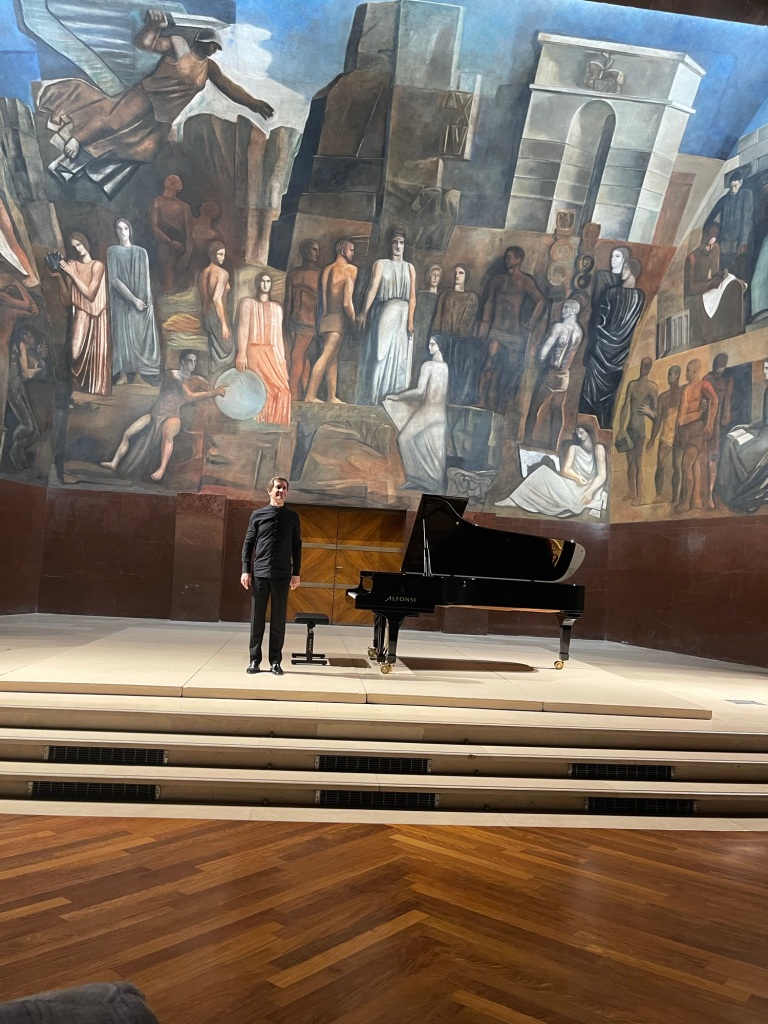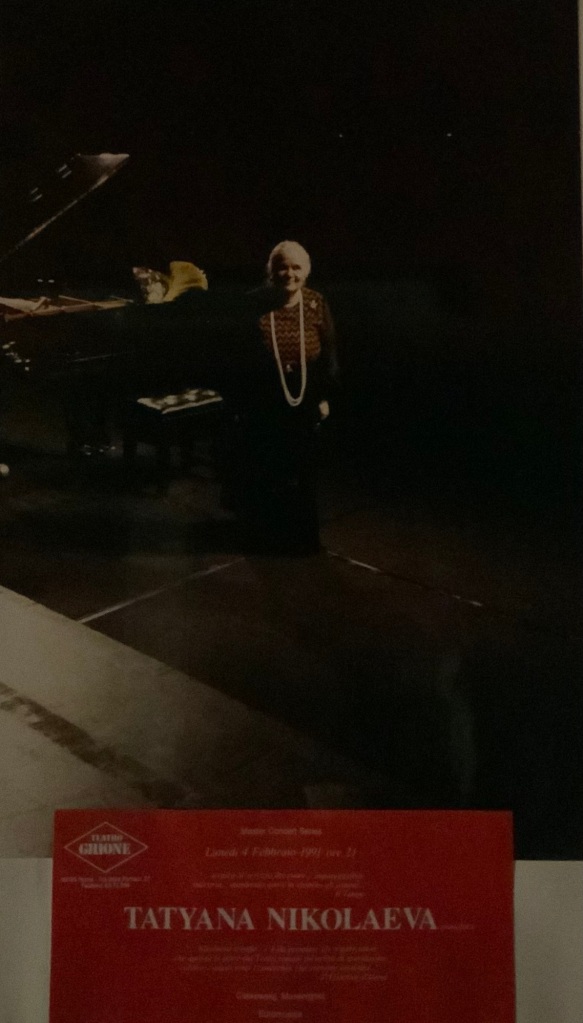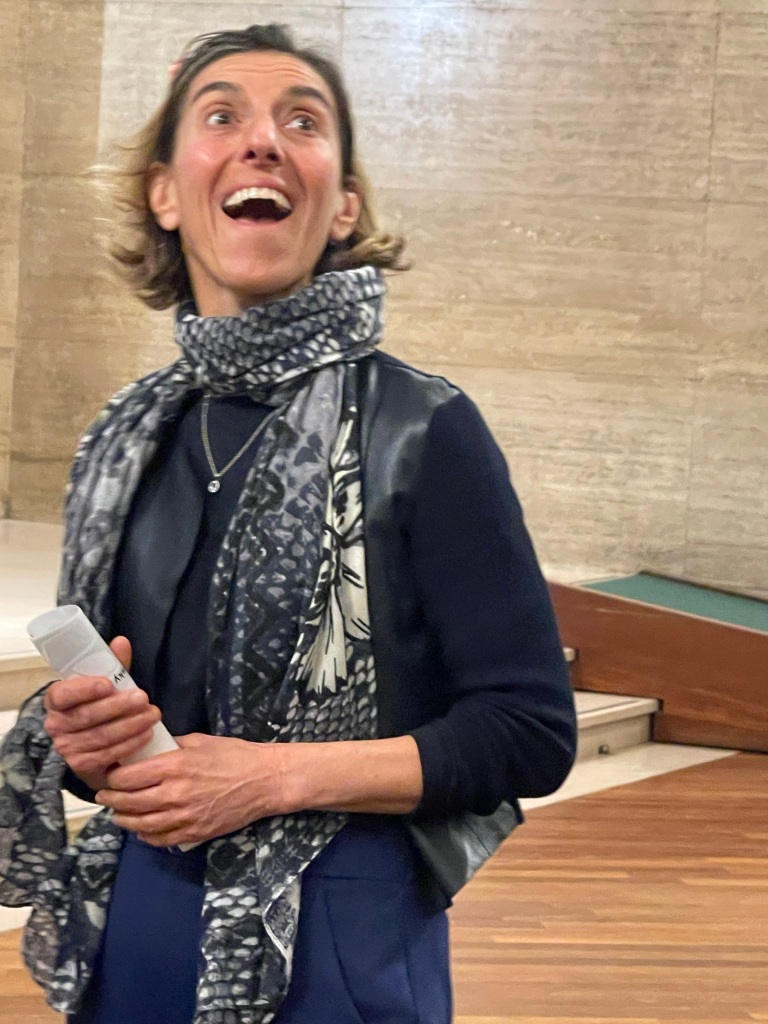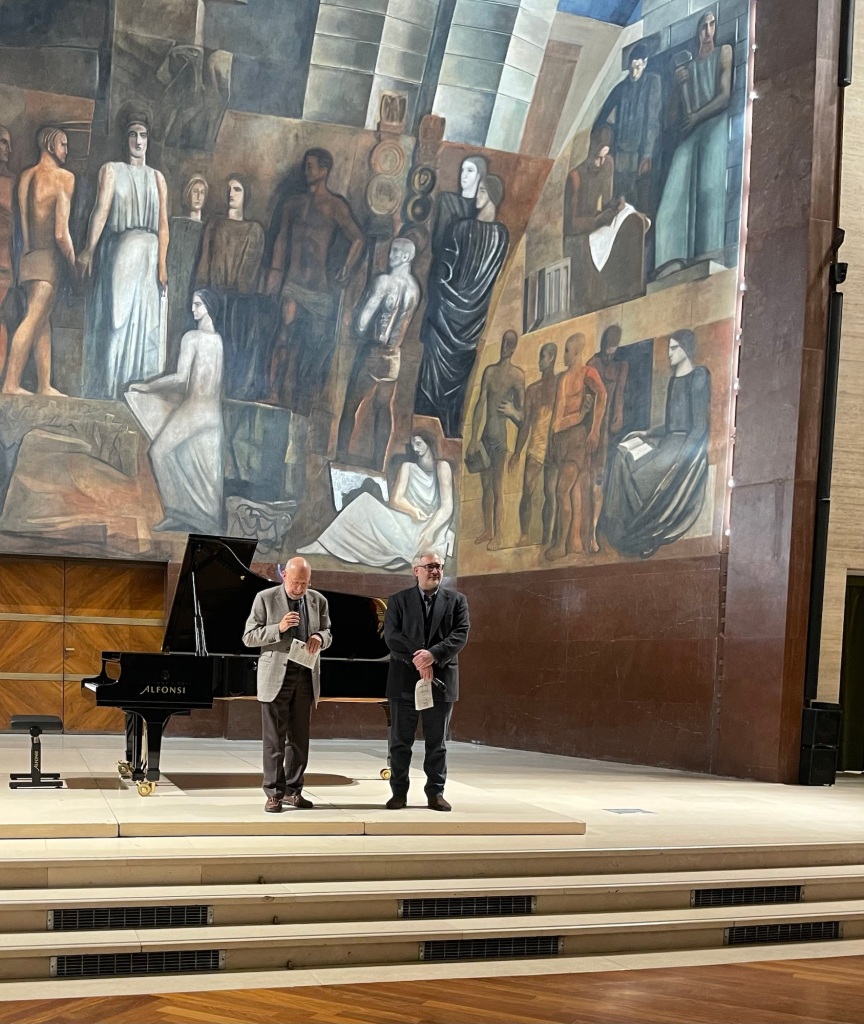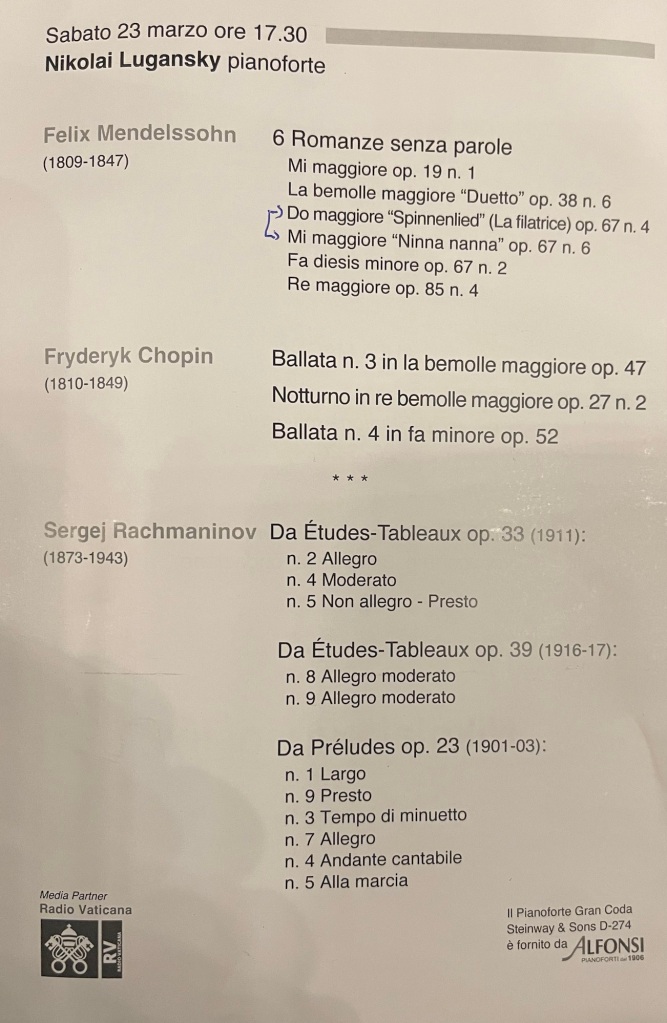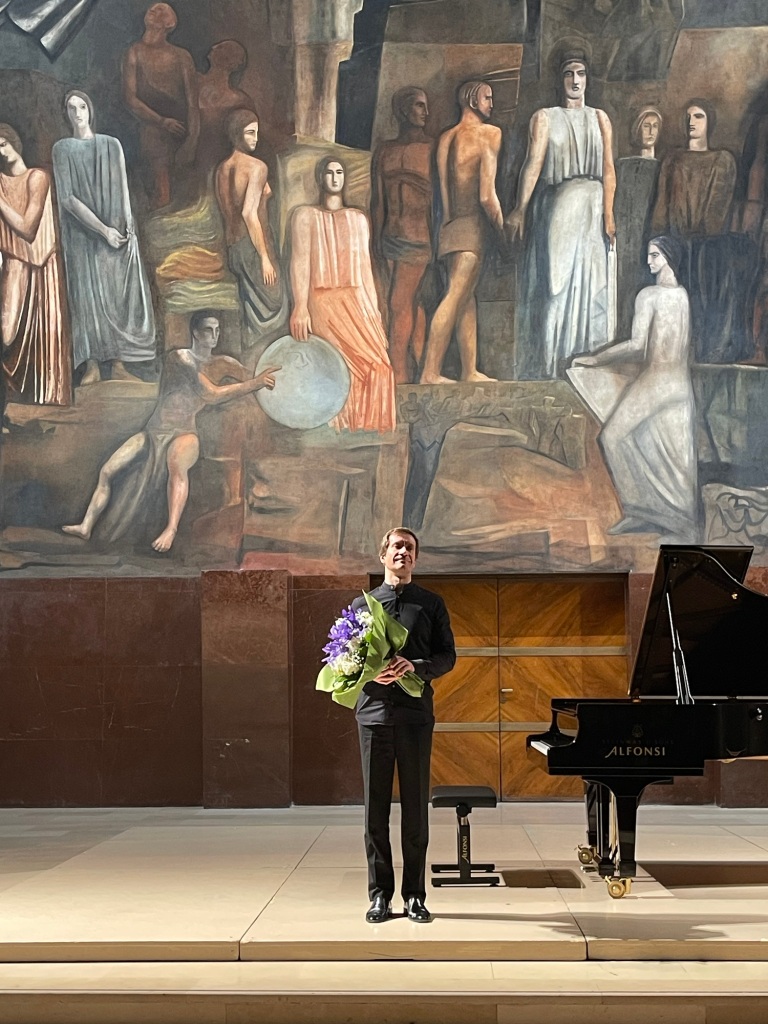

I think five years have passed since I first heard Phillip play in Perivale.He won a top prize in the Liszt Society Competition and later was invited to stand in at the last minute for an indisposed pianist.The difference now in five years is quite astonishing as a fine student pianist has turned into a real artist .Could it be the air in Scotland which is where he has been perfecting his studies after finishing at Trinity Laban in London? A pianist now who listens so carefully to all he does and plays with great sensitivity and sense of colour.Never a hard sound but his very pianistic fingers are like limpets clinging to each key and extracting the sounds they contain without any unnecessary hitting the keys or extrovert showmanship.
A beautiful programme that gave Phillip the possibility to explore the beautiful sounds that are hidden in this box of hammers and strings for those with ears to search and extract them.Of course one needs a sense of balance and musicianship allied to a technical preparation not only of the fingers but above all the use of the pedals.It was Anton Rubinstein who said the pedals are the soul of the piano and a careful use of the pedals allied to a sense of balance can give the impression that this percussion instrument can sing as well as any singer!Phillip showed us all that today.

I remember the great pedagogue Guido Agosti in his studio in Siena where every pianist worth his sort would flock for inspiration from a student of Busoni. A young Canadian pianist had just played the Goldberg Variations and thought he would bring some pieces of Mompou to the great master. Agosti took the music from the stand and put it in the waste paper bin saying ‘Now play me some music!’ Times have changes since the sixties and seventies and Mompou has now been revalued and many great pianists have made recordings of his works .It is music of miniatures of great delicacy with a kaleidoscope of colours and as Phillip showed us today it is music of great beauty and atmosphere.There is a wistful fluidity to the music with a gentle murmur of evocative sounds with splashes of colours spread over the entire keyboard.There were beautiful pungent sounds too in the Carros de Galicia with a beautifully etched melodic line.

Tchaikowsky’s Dumka is a miniature tone poem that Phillip played with great artistry with the beautiful opening melody gradually building in intensity with cascades of notes gently accompanying the melodic line.A beautifully quixotic central episode was just a gentle interlude before the final dramatic ending.

The Schumann is unjustly neglected because it is a work of great beauty of Schubertian contrasts.There was a great sweep to the opening ,’molto vivace ed appassionatamente’, and Phillip played it with a freedom and sense of style allowing the melodic line to float with refined rubato on the continuous wave of swirling sounds.The ‘Piuttosto Lento’ of the second movement was played with disarming simplicity and beauty and if the phrasing of the ‘etwas bewegter’ central episode was not as clear this may well have been Schumann’s elusive character just interrupting what was so obviously inspired by Schubert. The last movement ‘con forza ed assai marcato’ was played with rhythmic clarity and spirit and again here the elusive central episode was not always so clearly defined as it reappears in the coda like Eusebius interrupting the high jinx of Florestan.

It was Shura Cherkassky who I first heard play Schumann’s op 111 as a prelude to the Liszt B minor Sonata .Today Phillip played them as a prelude to the Franck Prelude Chorale and Fugue which was the work that Richter chose as a prelude to the Liszt sonata!
The César Franck was given a performance of an architectural form managing to shape the three movements into one unified whole.The Chorale in particular was played with simplicity and a beautiful sense of line with the expansive arpeggiando chords unfolding with ravishing beauty.If in the outer movements there were moments when rests were pedalled over and details smudged it was because he felt it so intensely as he allowed the music to move unrelentingly forward leading to the climax out of which the opening melody appears on a magic wave of sounds as it reaches the triumphant conclusion.A fine performance from a true musician.

British pianist, Phillip Leslie is known for his captivating playing and diverse programming. Praised for his sense of “culture and refinement” by the Liszt Society he has received considerable acclaim for his performances across the UK and Europe. He has been described by ESM as a “tour-de-force” and has performed extensively across the UK and Europe. His concert engagements include performances at Salle Cortot, Steinway Hall, St John’s Smith Square, Liverpool Philharmonic Hall, Castellon Auditorio & the Wigmore Hall and made his ‘Emerging Artist’ debut recital at the Usher Hall this season. A prize winner of the Anton Rubinstein International Piano Competition in 2023, he recently won First Prize and ‘Best Interpretation of a Swedish work’ at the Gothenbur International Piano Competition in Sweden. He is a laureate of the Liszt International Piano Competition (UK), EPTA Piano Competition, Vienna International Piano Competition, Jock Holden Mozart Prize and a finalist in the Beethoven Society of Europe Competition in 2021. Named a Park Lane Group Artist in 2018, he made his Southbank Centre debut in 2019. Phillip has been broadcast on BBC Radio and performed for the BBC Philharmonic Chamber Recitals at the Bridgewater Hall. He has collaborated with orchestras including the Scottish Sinfonia and the Liverpool Philharmonic Orchestras. Educated at Trinity Laban, Royal Conservatoire of Scotland, RNCM & L’Ecole Normale de Musique de Paris, he received the Weingarten Prize and Silver Medal Keyboard Award for his studies in London. His teachers have included Philip Fowke, Alexander Ardakov, Margaret Fingerhut, Kathryn Stott & Aaron Shorr.


Three Fantasiestücke for piano, Op. 111, composed in 1851, is one of four works by Schumann entitled Fantasiestücke. The other three are:
- Fantasiestucke op 12 (1837), eight pieces for solo piano, also based on Hoffmann’s Fantasiestücke in Callots Manier
- Fantasiestucke op 73 ( 1849), three pieces for clarinet and piano (violin or cello)
- Phantasiestücke, Op. 88 (1842), for piano, violin and cello in four movements
The title was inspired by the collection of letters and writings about music published in 1814–1815, Fantasiestücke in Callots Manier by E.T.A. Hoffmann one of Schumann’s favourite authors. The composer greatly appreciated the 17th-century engraver’s sense of fantasy.Clara Schumann wrote in her diary in September 1851 : “Robert has composed three piano pieces of a grave and passionate character which I like very much.”

Mompou is best known as a miniaturist, writing short, relatively improvisatory music, often described as “delicate” or “intimate”.His principal influences were French impressionism, Erik Satie and Gabriel Fauré, resulting in a style in which musical development is minimised and expression is concentrated into very small forms. He was fond of ostinato figures, bell imitations (his mother’s family owned the Dencausse bell foundry and his grandfather was a bell maker),and a kind of incantatory, meditative sound, the most complete expression of which can be found in his masterpiece Musica Callada (or the Voice of Silence) based on the mystical poetry of Saint John of the cross .He was also influenced by the sounds and smells of the maritime quarter of Barcelona, the cry of seagulls, the sound of children playing and popular Catalan culture. He often dispensed with bar lines and key signatures. His music is rooted in the chord G♭–C–E♭–A♭–D, which he named Barri de platja (the Beach Quarter).



















